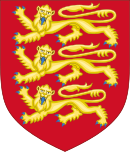
| This article is part of a series within the Politics of the United Kingdom on the |
 |
|---|
Local government in England broadly consists of three layers: civil parishes, local authorities, and regional authorities. Every part of England is governed by at least one local authority, but parish councils and regional authorities do not exist everywhere. In addition, there are 31 police and crime commissioners, four police, fire and crime commissioners, and ten national park authorities with local government responsibilities.[1][2] Local government is not standardised across the country, with the last comprehensive reform taking place in 1974.
Civil parishes are the lowest tier of local government, and primarily exist in rural and smaller urban areas. The responsibilities of parish councils are limited and generally consist of providing and maintaining public spaces and facilities.
Local authorities cover the entirety of England, and are responsible for services such as education, transport, planning applications, and waste collection and disposal. In two-tier areas a non-metropolitan county council and two or more non-metropolitan district councils share responsibility for these services. In single-tier areas a unitary authority, London borough, or metropolitan borough provides all services. The City of London and Isles of Scilly have unique local authorities.
The London boroughs, metropolitan boroughs, and some unitary authorities collaborate through regional authorities. The Greater London Authority (GLA) is the regional authority for Greater London, with responsibility for transport, policing, fire and rescue, development and strategic planning. Combined authorities are statutory bodies which allow two or more local authorities to voluntarily pool responsibilities and negotiate a devolution deal with the UK Government for the area they cover, giving it powers beyond those typically held by a local authority. Ten currently exist, with more planned.[when?]
- ^ "Find your PCC". Association of Police and Crime Commissioners. Archived from the original on 13 August 2024. Retrieved 7 May 2022.
- ^ UK, National Parks. "Planning and Affordable Housing". National Parks UK. Retrieved 23 June 2023.